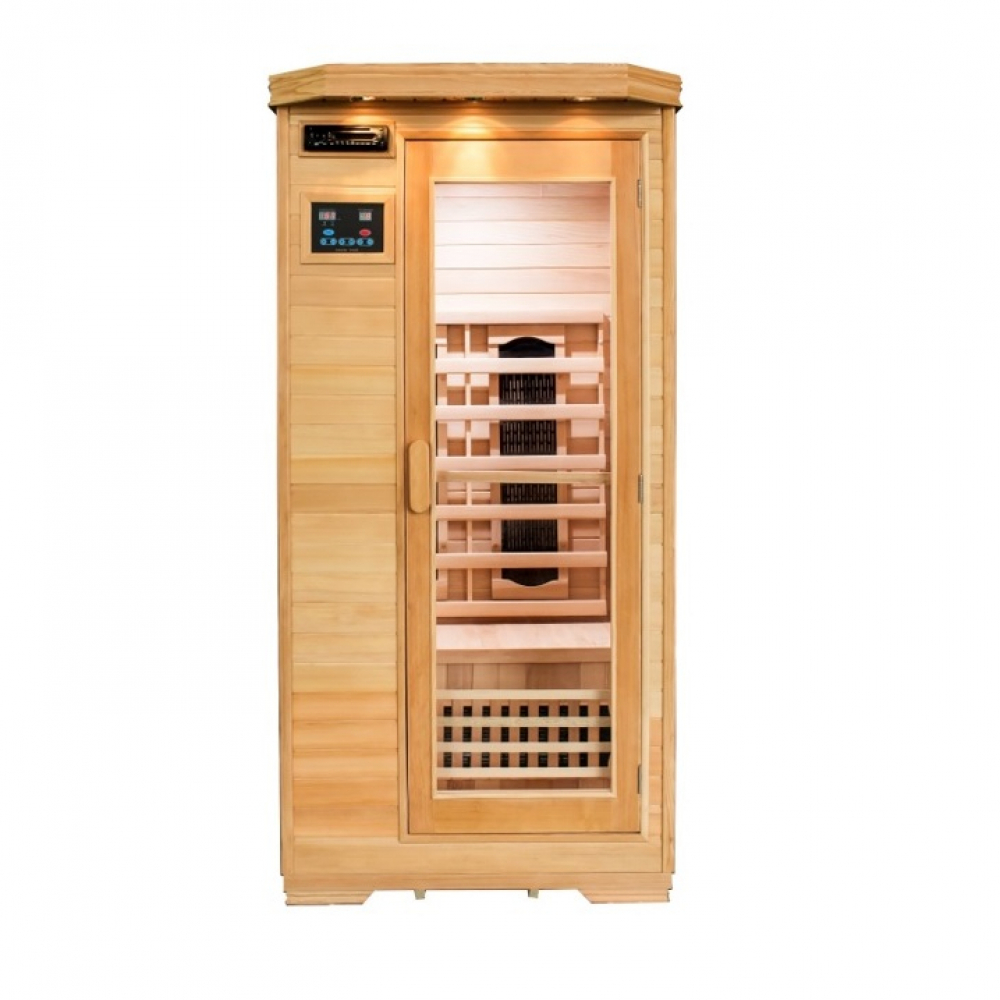INSPIRATIONS

Why choose an infrared sauna over a traditional one?
The festive season is over and many of us are feeling the effects of all the nice food, alcohol and partying. And the short winter days and rain or snow don’t help. Thus many people join a gym in January (some come once or twice to never return, but that’s a different story…). Others decide to eat more healthily, practice meditation… and generally look after their bodies and minds better.
Saunas have well-known benefits for the body and for the mind. As we sell a range of infra-red saunas, we have already created an article that summarises the benefits of those for your information.
Today, we want to focus on the differences between infra-red and traditional saunas and reasons for investing in an infra-red sauna.
Temperature inside
This is one of the biggest differences between infrared saunas and traditional (“Finnish”) dry saunas: although the goal in both cases is to heat up your body, infrared saunas don’t heat the air inside the sauna room but use infrared radiators to directly warm your body.
This helps the heat to penetrate more deeply and makes it easier to tolerate for longer. If you struggle to stay long enough to feel the benefits of a traditional Nordic dry sauna, an infra-red sauna might be a perfect solution for you.
Traditional saunas operate at 75 to 95 degrees, while infrared saunas at 50 to 65 degrees, while delivering the same type of cardiovascular, skin and muscle and joints benefits.
Mechanism of operation
Traditional saunas heat the air inside, which in turn heats your body. This heating is now usually achieved with electrically heated “coals” or stones (although some saunas, especially if you are in Finland, might actually still be wood fired.
Infrared saunas use ceramic or quartz radiators to emit infrared radiation that increases your core temperature more directly.
Ambience
Traditional saunas tend to have a more, well, traditional feel. Infrared saunas usually come with some modern features including mp3 players, stereo speakers, colourful LED lights and similar modern technological ways to enhance the experience. Music in particular is a useful feature as users tend to spend more time in the infrared saunas.
Price and running costs of saunas
Kit saunas cost from around £1,000 for a small one-person one to as much as £15,000, with better quality ones starting at over £2,000 for a small one -- a custom built sauna will vary depending on your requirements and the company that builds you one, but generally will cost upwards of £5,000 to build in the UK. The cost of a high-quality infrared sauna is competitive with the cheapest traditional dry sauna kit.
The running costs are higher for traditional saunas, as the heat is generated by a 2.5kw minimum (and for bigger ones, a 6kw) stove. An infrared sauna would use about half of that power, and also requires no preheating as the mechanism of its operation in the body is different, while a traditional dry sauna needs between 30 minutes and an hour preheating.
